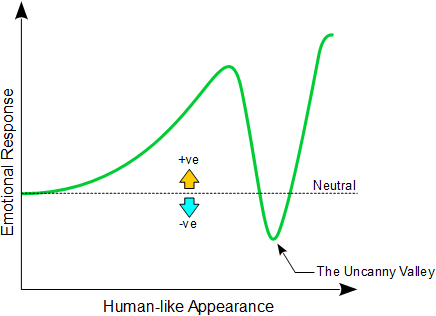
“Never judge a book by its cover,” they say. The idea behind this common expression is that the true value of an individual is not always easy to perceive based upon his or her physical appearance. We should not be too quick to judge, and ought to get to know people a bit before deciding whether or not we like them.
Then again, there is a reason why book covers don’t all look the same, and the success of a book is indeed partially dependent on its visual appeal. We are all dedicated cover-judgers, because it’s in our very nature, and there is – if we’re going to be realistic – a grain of truth at the center of many stereotypes.
The root of the issue is found in biology. Every insect, vermin, and beast needs to be able to decide in an instant, for its own survival, whether this thing-I’ve-never-seen-before is dangerous, distracting, or delicious. Human beings are wired in essentially the same way. Whenever we encounter an individual we are meeting for the first time, our brains perform an explosion of rapid, complex computations based on facial features, height, musculature, smell (if we’re close enough), tone of voice, body language, and yes, skin color. As a result of these calculations, we’re going to categorize this individual into one of several broad “boxes” in our minds reserved for those who have yet to work their way out of First Impression Land.
None of this is a justification, of course, for treating people poorly based on these boxes that culture, upbringing, and our own personal experiences have embedded within us; however, it does require us to be aware of these factors and move beyond them, adjusting our thoughts in ways that the insects, vermin, and beasts of the field cannot.
Taking this information back with us to the safe waters of Computer Science, we might find some interesting applications.
For one thing, Computer Science, specifically is application development aspect, is largely concerned with appearances and first impressions. In my Graphical User Interface class, I spend a significant amount of time talking about how colors, shapes, sounds, and groupings work together to create an appealing interactive experience between systems and users.
As computers become more complex and versatile, we are going to want to make them more practically useful to us as well, and this is going to involve robotics – an upcoming addition, by the way, to Galen’s Computer Science program. Not only will our artificial systems be able to tell us how to do things effectively, they will also be able to do them for us in many cases. While this sounds great at first glance, we are going to need to put some rules in place to ensure that our tools don’t obey our instructions in “interesting” ways. We certainly don’t want them to become weapons against our own best interest. A day may indeed come when there’s a robot in every household, and we need to make very sure that they’re safe.
On the less dire side, we are also going to be very interested in what our new household servants look like. Do we want them to look like toys, or do we want them to look like people? Each of these options has interesting implications, but what most of us are probably not going to want is a robot that looks like a cross between a person and a toy.
Near the end of my last article I mentioned a concept known as the “Uncanny Valley.” To illustrate the principle visually, take a look at these three images, fresh from the Google presses:

In case you’re not already aware, from left to right these are Wall-E from the animated film of the same name, one of the main characters of the movie Ex Machina, and an image resulting from an Internet search for the phrase “Japanese Girlfriend Robot.” By the way, be very careful when searching the Internet for the phrase “Japanese Girlfriend Robot.” Never mind why.
The appearance of the robot on the left appeals to most people. This is not a coincidence; it was specifically designed to be an audience surrogate in an animated family film. It doesn’t look human at all, but it has easily recognizable human-like characteristics: two eyes, two hands, and a general sense of horizontal symmetry.
The appearance of the robot in the middle is also designed to be appealing to human sensibilities, and even without hair, its face is very expressive. This is also not a coincidence, and in fact is one of the major plot points of the film in which it appeared. This kind of robot, intended to closely mimic a human being’s appearance, is called an “android,” from the Greek “anthropos” or “man.” This term ought to be familiar to you from its use in words like “Anthropology” (the study of human development in history) and “misanthropy” (a dislike of human beings). Technically, this particular specimen would be known as a “gynoid” by linguistic purists, because it looks like a woman.
Then we come to the real-life attempt on the right. As with the middle diagram, the facial features are designed to appeal to a wide variety of cultural conventions of “beauty,” but on closer examination it seems a little bit “off.” The smile is a tiny bit too wide and, even though all of the images are static, the lack of perfect muscular integrity in the way the skin is positioned causes it to appear exactly as it is: fake.
This is not a dig against our new robotic friend. She’s simply not equipped to portray a wide range of human emotions yet, and this is somehow reflected even in sill images of her face. By the way, notice how natural it is to read my description of her as a “she.” This is called the “anthropomorphism” (there’s that Greek word again) and refers to our tendency to humanize inanimate objects, giving names and ascribing personalities to things like boats, weapons, and laptops. In some cases anyway. What?

Here is our principle again, this time illustrated in graph form. The closer an object – in this case an artificial creature – comes to human appearance, the better our emotional response to it. A toy robot with two eyes, a nose, and a mouth will elicit a much more positive reaction in both children and adults than one with a single “optical sensor,” even though there’s really no need for these human analogs in terms of the system’s function. This is not to say that a robot with one eye can’t be appealing, but it would need to have other things going for it, like a small, non-threatening shape and a method of communication that involves an endearing sequence of beeps and whistles à la R2-D2 or BB-8.
If the object looks exactly like a human being, the positive reaction will be high; however, if we aim for that target and justmiss it, there’s a sharp dip in our response. This is the uncanny valley.
The uncanny valley is home to badly drawn art, versions 1.0 of our robotic servants, scarier species of humanoid aliens, and not-so-fresh zombies. They are all things that are clearly intended to be people, but somehow are not. To return to an earlier statement, their colors, shapes, sounds, and/or groupings of features work together to create a distinctly unappealing interactive experience.
The uncanny valley is where many negative first-impressions are born, and while it applies largely to robotics due to the intent to make our creations in our own image, there are broader applications to other areas as well. Computer interface design, art in various media, horror movies, these have all made use of the principle – both its negative and positive aspects – to powerful effect.
The Uncanny Valley is still… a great name for a band.
As I began by saying, there is a reason why stereotypes persist. Sometimes first impressions can mean the difference between life and death, and while we never want to react to people based solely on our initial impressions, we know what we like in our art, music, and robotics.
It is the critical thinker who can evaluate circumstances based on more than just outward appearances, and while we’re always going to want our toys to look cool, it is the mature thinker who realizes that sometimes functionality is more important than familiarity. Of course, the research continues, and I am certain we’ll eventually have the best of both worlds: robotic assistants who will look just as human as we want them to while at the same time performing their many functions with perfect efficiently.
Until then, as you wander the halls of Galen University, be on the lookout for those almost-people bearing characteristics that distinguish the robots and zombies from the rest of us. Then again, maybe it’s just exam week.
P.S. Right, so I mentioned that “body language” is one of the ways we do initial assessments of those we meet. Being able to accurately read the non-verbal signals of those around us is actually an amazingly useful skill. There are many free books on the subject online, and I recommend you download and read one, or several. That perfect job interview a few months or years from now will thank me for the advice.
David Aguilar
Assistant Professor of Computer Science and Engineering
Galen University
